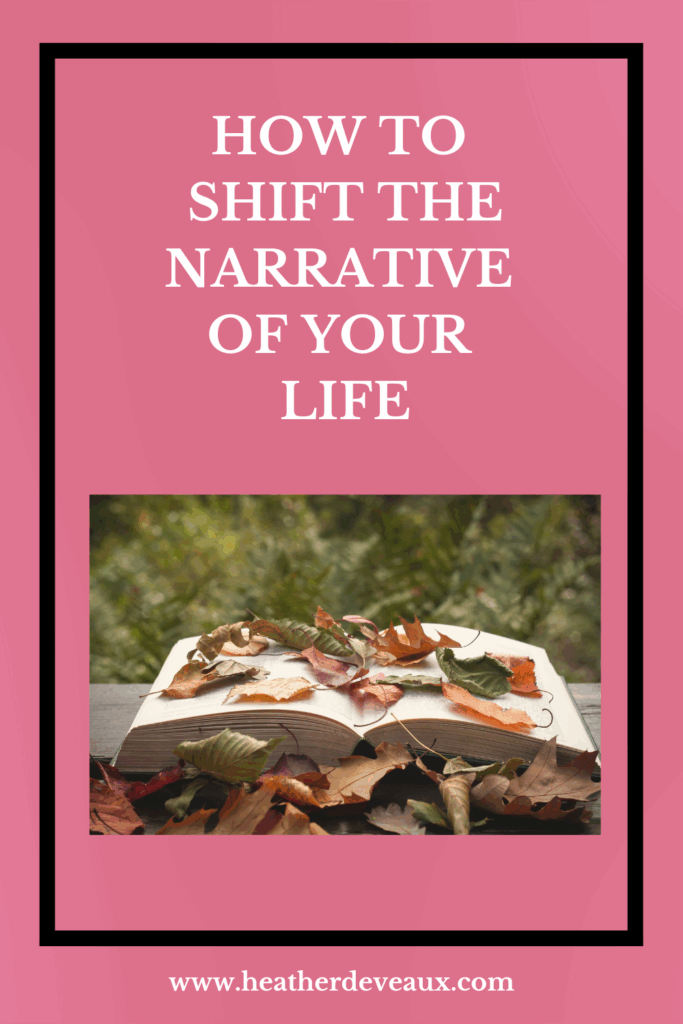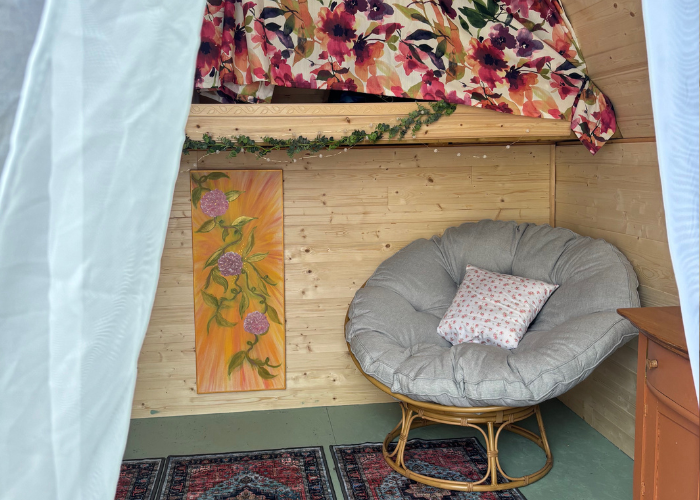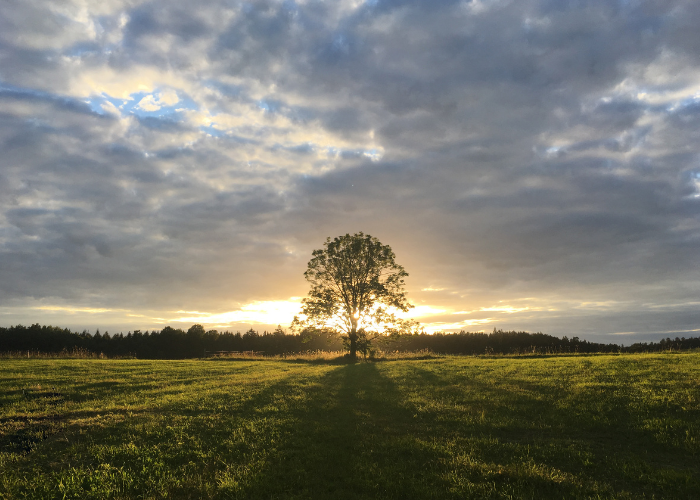How to Shift the Narrative of Your Life
*This post contains affiliate links. If you click through and make a purchase, I may earn a small commission at no extra cost to you.
You can shift the narrative of your life without saying a word. But most people spend more time talking about what they want to do than actually doing it. There’s nothing wrong with making plans and talking about changes you want to make. Except we all know that nothing changes unless we change it. And change can be scary, not to mention, overwhelming.
I recently shared a post on LinkedIn about this creative era I’m in. A conversation I had with someone about “bank rolling” this sabbatical year got me thinking. I realized that to the outside world, this shift probably looks rash or sudden. The truth is that I’ve been working toward taking this year off from my business for a long time. Of course, that’s not the part of the story people see or hear.
How I Shift the Narrative on the Facts of Life
I’ve been working to shift the narrative of my life for a long time. As a person who has lived with a chronic illness since I was 15 years old, I’ve been unhealthy more than I’ve been healthy. But you’d never heard me tell the story like that. Despite physical disabilities, unpredictable pain and ongoing deformity taking hold, I almost never bother to mention that I am disabled or that I am in pain. It’s partly because I think people don’t want to hear about my aches and pains, but it’s mostly because I don’t want to think of myself as someone who can’t do things.
There have certainly been times in my life when my body simply said no, but I didn’t let that stop me from moving forward in whatever little ways I could. So yes, I have a disability, but that’s not the story I tell. I am in control of the story I tell when it comes to my body.
When I took over a company and had to shut it down for lack of funds, I was devastated. I felt so deflated and tired of relying on other people to do a good job so I could have a job. What happened during that time was difficult, yes, but what came out of it was the business I’m now taking a one-year sabbatical from running. There’s two sides to every story, but often, there’s more like three or four. Instead of telling the story about how someone ruined a company and I was unemployed, I tell the story of how I used that experience to fuel my desire to work for myself.

Understand what Your Stories Mean to You
These are just two examples in my life of what something looks like vs what something is to me. It doesn’t actually matter what people think of my disability. It matters what I think of it. And it doesn’t matter what people think of that company-gone-bad. It only matters what I did after that happened.
And it doesn’t matter what other people think of my creative sabbatical, but I know you’re curious about how I’ve worked my way up to actually doing it. It’s not a fast process, despite how it looks, and the funny thing is that for the people who really know me, they know I don’t actually make split-second decisions. I practice things before I do them for real. Let me give you some examples.
I’ve always known that I wanted to work for myself. Not because of how much money I could make, but because of how much time I could claim as my own. Working 9-5 was never my jam. Even when I had one (yes, just one) job that I loved, I still felt called to look for other opportunities. I could blame it on my ADHD, but the truth is that I don’t chase shiny objects. I chase feelings.
The feeling I wanted for my life was one of freedom. I also knew I was someone capable of making my dreams of living outside of a 9-5 world a reality. I just needed to figure out how to do it. Most people start out thinking they should succeed right out of the gate and I’ve never been one to trick myself into thinking the first try is the best try.
Shift the Narrative by Test Driving a New Life
I didn’t go from zero to sixty when it finally came to running my business, even though I had to make a decision after losing my job. I’d been freelancing on the side, working to earn money from my kitchen table online. Little bits here and there to get started and then bigger opportunities came my way. I didn’t have a website and I didn’t talk about it on social media. But I was doing it.
When I lost my job, I knew that was the time to make the change. I didn’t become an overnight success just because I decided to go all in on running a business. I relied on the benefits I received from job loss to help fund the time I needed to get my business up and running. Paired with the freelance income I was earning, I created enough of a runway for myself to actually replace my income. That was ten years ago. And now I’m taking a year off.
But the year off didn’t start out as a year off either. Because I’ve identified that “time” is one of my most important values and having the autonomy and freedom to use my time as I see fit is basically my life’s goal, I’ve been working toward taking this year off for a while. I also didn’t know it was going to be half-way through 2025 that I did it. But it turned out to be the perfect timing. What is now a year of doing whatever the hell I want to do was once only a few days off.
Decide What “Enough” Means
If you’re an entrepreneur who loves building a business and lives in fear that taking time off will result in the utter ruin of what you’ve built, you’re in good company. That’s how most entrepreneurs that I know think. Everyone is too busy to stop and ask themselves what they really want until something bad happens or until they burnout so badly they can’t entertain running a business anymore.
I’ve always operated on the notion that there is a point when “enough is enough” and I’ve finally been able to identify what that number is. But more than that, I’ve been able to figure out how to run a business that doesn’t need all my time. I had to teach myself to relax though, and start taking time off in small amounts. The anxiety I felt when trying to do anything other than run my business wasn’t worth it so I just kept at it. It wasn’t until I got really clear that “time freedom” was what I actually wanted that I was able to settle in and start taking long periods of time off.
I started with a week, still checking emails because I couldn’t fully let go. Then I took two weeks off. When I hired a team of people to help me run my business. I did that because I had big visions of taking an entire summer off while my business continued to function at full force. I read an amazing book by Mike Michalowicz called Clockwork that helped me organize my systems and processes and work my way up to taking the summer off. And then I took an entire quarter off, choosing to focus on writing a series of books. Then I took another quarter off to write another series of books.
What You See is Not How it Started
In 2022, I took the entire summer off and did a cross-country road trip from one end of Canada to the other by myself. And I’m sure that looked like I went all in on that too, but the truth is that I started solo travelling years earlier by taking an overnight trip, then a weekend trip. I did a few week-long trips and a few weeks at a time before I planned, prepped and saved to go for six weeks across the country by myself.
There’s a theme here that I don’t always talk about and that’s how to build capacity. We all want what we want right now and whether we like to admit it or not, we don’t want to have to work our way up the ladder in our own lives. I think there’s a collective agreement that we should just be able to do something and if we can’t do it right now, then we accept that means we’ll never be able to do it or it’s not worth doing the work.
There Has to be a Starting Point
I have always been someone who bucks against that kind of thinking. Just because it can’t happen now doesn’t mean it won’t ever happen. There was a time when I thought I’d never be able to travel and now it’s a major part of my life. But it didn’t start out that way. It started out with small, budgeted, heavily saved-for trips. I can get on a plane and go anywhere I want to now, but that wasn’t always the case.
I think people look at what I’m doing here and think, “must be nice”, but don’t stop to think about what I did to get myself here. In fact, I know people aren’t thinking about what kind of planning and preparation went into being able to take a year off because they can’t see themselves taking even a weekend off. How could they get to a year? And that’s the wrong way to think about it. Instead of worrying about how you’ll never take a year off, focus on that one weekend next month and work toward that.
Go From Zero to One, Not Zero to One Hundred
It’s a slow grind of a process that nobody wants to talk about because we’ve been conditioned to believe in instant results. My brain loves an instant result so when I catch myself wondering if something is possible, I test it out, like any good entrepreneur would, on a smaller scale.
Going all in on a creative sabbatical isn’t something I did on a whim. I’ve been working toward this for a long time. It just turned out that the opportunities aligned and it made sense for me to do it now. Plus, I’m tired. I’ve had a hell of a few years building my business, getting divorced, moving, and re-calibrating for myself. I don’t need a reason to do this, but I’ve got a few in my pocket anyway.
This creative sabbatical is the classic image of the iceberg with 90% of the berg hiding under water. What you see is just the tip. There’s an entire ecosystem supporting this decision and the goals I have for myself. It took years to make manifest, but the time was going to pass anyway. And now, here we are. So I want to help you make manifest something you’ve been dreaming about doing. Here’s some examples of how to go from zero to one, instead of worrying about how to go from zero to one hundred.
One Small Step, One giant Leap
If you want to write a book, start with writing one page. It’s painfully slow, I know, but you can’t write 100 pages until you’ve written one. I heard Stephen King give a talk once saying that he writes 18 pages a day. If you add that up over a year, you’ve got several manuscripts. But it all starts with one page. Shift the narrative from I don’t write to I write a page a day.
If you want to take a trip, you need to know what the trip is going to cost. Do the research and then put your first $20 in a bank account to start saving. Sure, you might need more money, but you need to take action with a small step to save. I teach you how to do this in my audio course, Go Anyway: Solo Adventure Guide for Women. Shift the narrative from I don’t travel to I’m taking a trip this weekend.
Want to Go Bigger?
If you want to live in Italy, I’ll take a page from my best friend’s book to share: she’s been planning to move to Italy for a few years and to prepare for that move, she’s been planning and spending more and more time there. She’s been studying Italian for a while now. What started with a week, turned into two, turned into three. And now she goes regularly for several weeks at a time. She had a five year plan. That was three years ago. The time will pass anyway. Shift the narrative from I live in Canada to I’m moving to Italy.
If you want to pay off debt, you can begin paying it off with even the smallest amount of money. Every penny counts. Don’t fool yourself into thinking you need to pay large lump sums to make a difference. I’ve been able to pay off thousands of dollars in debt by allocated just 10% of my income to paying down debt. It’s made a huge difference over time, even though sometimes I’m putting $32.45 on my credit card bill. Every dollar I get, whether that’s $14 for returning bottles at the recycle depot or $50,000 from a client project, 10% of it goes on my debt. Shift the narrative from I’m in debt to I’m paying off my debt.
If you want to sell everything you own, buy an RV and travel the world (*cough*hello!*cough*), then start by finding out if you even like camping. Test the gear you think you’ll need. Test drive vehicles or rigs to see what suits your style. Rent one for a week and drive around for a while. Shift the narrative from I’d love to be a full-time traveller to I’m buying my first RV next fall.
You Need Time to Shift the Narrative
The common denominator in all of these examples is time. The future feels really far away, but the future is literally tomorrow. You can shift the narrative of your life in a short period of time. It’s not just about deciding to do something different, it’s about actually taking those small, sometimes painful steps toward that different thing.
Most people aren’t patient enough, and hell if I can’t relate. I’m very impatient. But I know that about myself so instead of feeling sorry for myself that I couldn’t take a year off before, I took a few weeks off and enjoyed the hell out of it, remember that there was a time when even that felt impossible. But I did it. I have a tendency to relish in the now and I’ve trained myself to celebrate the changes I see in my life.
Embrace the Small Steps to Shift the Narrative
So if the idea of taking large chunks of time off appeals to you, don’t forget to be grateful for those smaller chunks of time. They are building your capacity to move into bigger moments. And while you could just burn it all down and go all in on something new (whether that’s work, life, relationships, savings, travel, whatever!), it is easier in many ways to test the waters first. I know it doesn’t look like I did that, but I did and I do. Your life doesn’t have to look like mine. Go figure out what you want your own life to look like and take those small steps toward it today.
If you want to start shifting the narrative of your life today, join my 5-Day Journal Challenge. I’ll send you an email a day for 5 days to help you uncover those deeper desires and focus on what matters most. Maybe you don’t know what matters, or you’re still operating from old priority lists. My journal challenge will help you shift the narrative and find what you’re looking for now.





